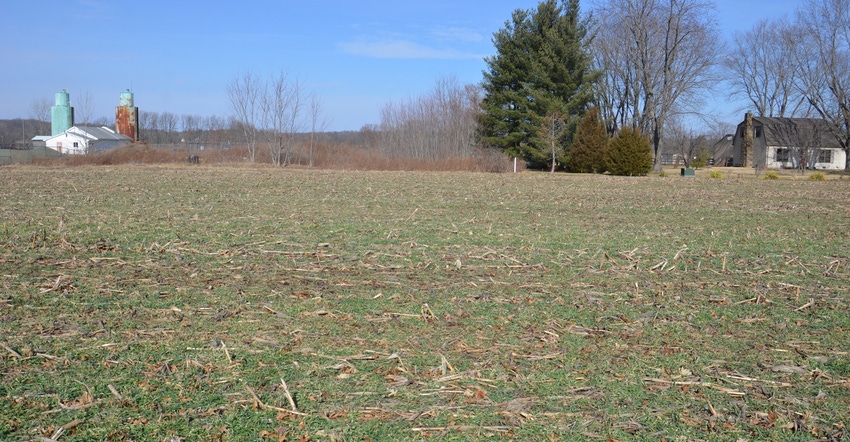
Derek Schmitt and Tony Bailey visit lots of operations where farmers grow cover crops every year. Yet they also drive by many fields still in conventional tillage. Especially after a tough winter like this one, both believe many of these fields would benefit from cover crops planted this fall.
Schmitt is a district conservationist with the Natural Resources Conservation Service. Bailey is an agronomist working out of the Indiana NRCS state office. Together, they’ve seen a host of benefits where people have grown cover crops over the past few years.
Here are 10 reasons why you should consider planting cover crops in your fields after the 2018 harvest. Schmitt and Bailey provided this information. Before you begin growing cover crops, check with your crop insurance and other program agents to ensure cover crops are compatible with your farm’s USDA programs.
1. Reduce soil erosion. This benefit still tops the list. Coverage of the soil provided by the living cover crop and residue reduces both wind and water erosion. Protect valuable topsoil from erosion.
2. Increase water infiltration. Cover crops help build soil aggregates on the soil surface, reducing ponding. They also help break through compaction layers deeper in the soil.
3. Build organic matter. Use the full growing season to harvest sunlight, and maintain and build organic matter in your soils. Organic matter builds back slowly, but it will increase over time in a soil health system.
4. Cycle nutrients. Living plants are crucial to the nutrient cycle and soil biology. In fact, soil biology is driven by living plants. Nutrient use efficiency is improved in healthy soil. Nutrients will also be slowly released during the growing season, spoon-feeding crops.
5. Suppress weeds. Some cover crops, such as cereal rye, can help suppress certain weeds, if managed as part of an integrated weed management system. Rye is effective in suppressing marestail.
6. Fix nitrogen. Select legume cover crops to fix nitrogen for the following cash crop.
7. Scavenge nitrogen. Cover crops gather nitrogen from the soil profile and release it as plant material decays. This nitrogen builds organic matter or becomes available for future crops.
8. Use moisture. Cover crops planted in the fall can be designed to use high amounts of moisture to help fields dry out for planting in the spring.
9. Feed livestock. Manage cover crop acres for grazing as part of a prescribed grazing or forage harvest system to minimize compaction and other potential issues.
10. Feed wildlife. Some cover crops provide direct food sources to wildlife. Earthworms and insects that flourish in cover crop fields are an excellent food source for northern bobwhite quail and other bird species.
There are numerous reasons to use cover crops in your cropping system. Schmitt and Bailey say now is not too early to start planning for your fall ’18 cover crops.
Contact your local USDA Service Center for more information regarding cover crops.
About the Author(s)
You May Also Like




